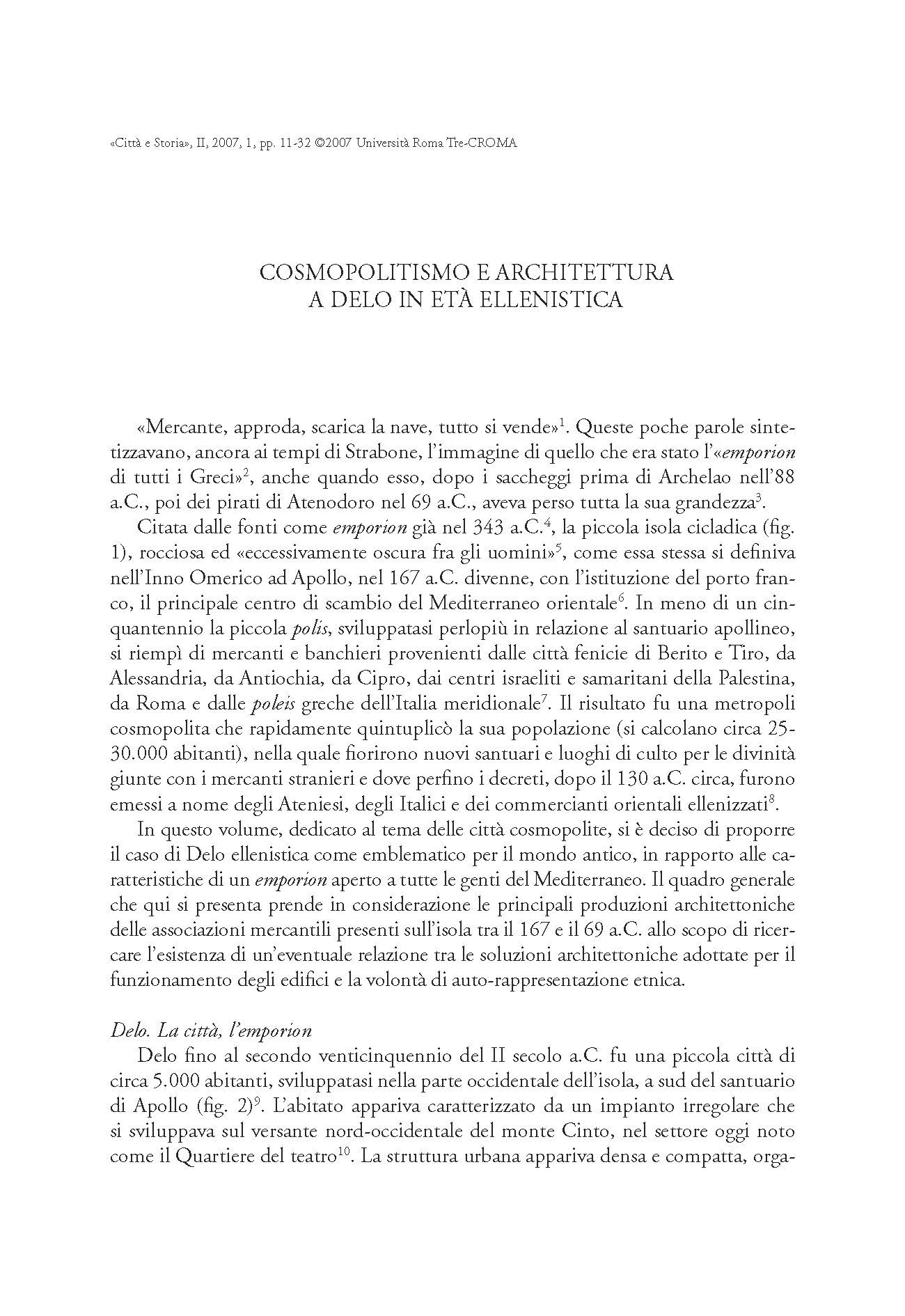Cosmopolitismo e architettura a Delo in età ellenistica
6,00 €
After 167 BC, as a consequence of the status of free port, the sacred island of Delos grew up into the most important trading centre in the eastern Mediterranean. Many merchants and bankers arrived on the island from the Phoenician cities of Berytos and Tyros, from Alexandria in Egypt, from the Jewish and Samaritan centres of Palaestina, from Rome and from the Greek poleis of southern Italy and Sicily. They built magnificent houses, created great buildings for business activities and founded sanctuaries for their own worships. The aim of this paper is to investigate the reflection of different cultural influences in architecture through the analysis of the main buildings built in the period from 167 to 69 BC, such as the Agora of the Italians, the Building of the Posedionasts of Berytos, the Sanctuary of Syrian gods and the Synagogue.
After 167 BC, as a consequence of the status of free port, the sacred island of Delos grew up into the most important trading centre in the eastern Mediterranean. Many merchants and bankers arrived on the island from the Phoenician cities of Berytos and Tyros, from Alexandria in Egypt, from the Jewish and Samaritan centres of Palaestina, from Rome and from the Greek poleis of southern Italy and Sicily. They built magnificent houses, created great buildings for business activities and founded sanctuaries for their own worships. The aim of this paper is to investigate the reflection of different cultural influences in architecture through the analysis of the main buildings built in the period from 167 to 69 BC, such as the Agora of the Italians, the Building of the Posedionasts of Berytos, the Sanctuary of Syrian gods and the Synagogue.

